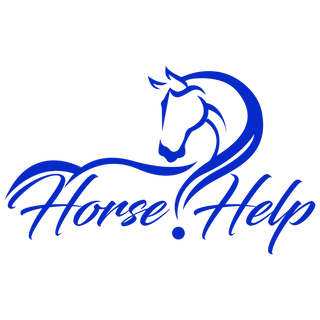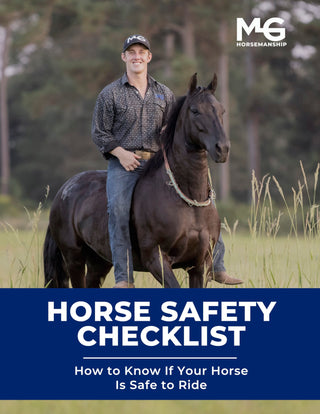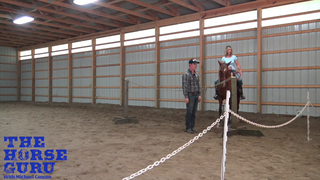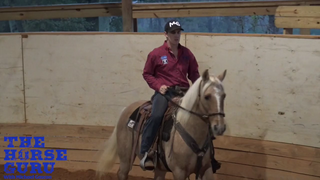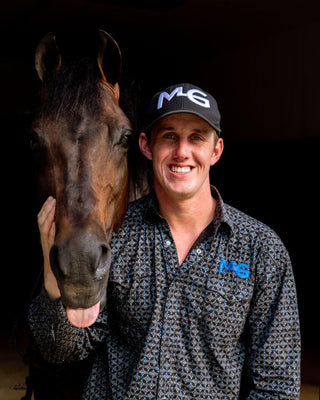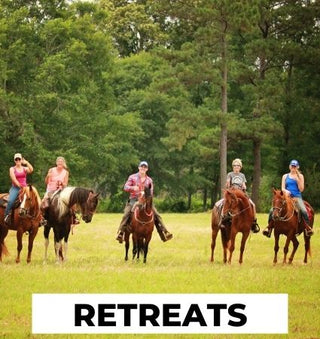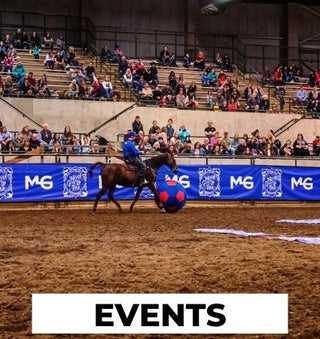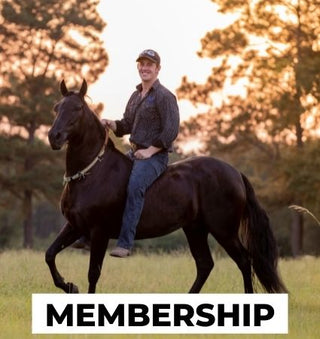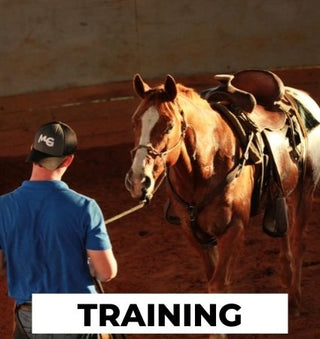Watch the Video Here or continue reading below!
Stability in the saddle is essential for building confidence and improving communication with your horse. Whether you're a performance rider, a trail rider, or working with young horses, having a secure and balanced seat will make a world of difference. This article will focus on how to stabilize your lower leg to enhance your riding experience and ensure you remain a steady, effective leader for your horse.
The Importance of a Stable Lower Leg
A stable lower leg is the foundation of good riding. Without it, every stumble or misstep from your horse can throw you off balance, making it harder to give clear cues. A secure lower leg helps you:
- Maintain control and confidence in the saddle
- Absorb the horse’s movement without bouncing excessively
- Keep your hands quiet and steady for clearer rein communication
- Stay balanced, even on rough or unsteady horses
Posture and Position: Setting Yourself Up for Success
1. Sit Deep and Balanced
To create a strong foundation, start by sitting deep in the saddle. Roll back slightly onto your seat bones and let your shoulders settle behind your hips. This position ensures that your body remains balanced, rather than tipping forward and disrupting your equilibrium.
2. Keep Your Heels Down and in Front
Your heels should always be slightly in front of you—not behind. This positioning provides stability and prevents you from getting thrown forward if your horse stumbles or makes a sudden move.
3. Lighten Your Seat Without Perching
While sitting deep is crucial, lightening your seat slightly by standing in your stirrups can help with stability—especially on young or rough-moving horses. This technique, learned from endurance and eventing riders, allows you to absorb motion with your legs rather than your entire body.
Applying Lower Leg Stability in Motion
1. Absorbing the Trot
When riding a young or unbalanced horse, their movement can feel unpredictable. To maintain stability:
- Apply gentle pressure through the inside of your knees.
- Keep weight in your stirrups without gripping too tightly.
- Think of standing on the ground with feet parallel, avoiding excessive bouncing.
2. Maintaining Control at the Canter
When cantering, focus on keeping your lower leg quiet and your weight evenly distributed. If the horse leans into a turn or stumbles, standing upright with steady legs will help you remain unaffected. By staying balanced, you prevent adding weight in the wrong places, which could make the horse’s movement more unsteady.
3. Handling Stumbles and Sudden Movements
Young horses, like Fritz—a three-year-old warmblood in training—often struggle with coordination. If your horse stumbles or loses footing:
- Keep your lower leg strong and stable.
- Stand upright instead of collapsing forward.
- Let your consistency guide the horse back to balance.
The Key to Quiet Hands: A Steady Lower Leg
Many riders struggle with unsteady hands, but the secret to quiet hands isn’t just in the arms—it starts with the legs. When your lower leg is stable:
- Your upper body absorbs less movement.
- You can keep your hands soft and responsive.
- Your horse receives clearer rein aids, improving communication.
Building Confidence and Communication
A steady lower leg does more than just improve balance—it creates a sense of confidence for both you and your horse. Horses seek consistency from their riders, and when you remain stable, they learn to trust you. Whether you’re riding obstacles, performing intricate maneuvers, or simply trotting down a trail, mastering lower leg stability will elevate your riding skills.
Try It Yourself!
If you struggle with stability, practice riding with slight pressure in your stirrups while keeping your feet parallel to the ground. Avoid gripping too tightly, and focus on keeping your weight centered. Over time, you'll notice a huge improvement in your balance, confidence, and communication with your horse.
